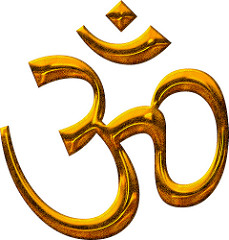The Swan is an important motif in the Advaita Vedanta philosophy. The Advaita Vedanta is the oldest extant sub-school of Vedanta, an ancient Hindu tradition of scriptural exegesis and religious practice, and the best-known school of advaita, the non-duality of Atman (soul) and Brahman (supersoul) or the Absolute. It gives a unifying interpretation of the whole body of 108 Upanishads (holy scriptures), providing scriptural authority for the postulation of the non-duality of Atman and Brahman.
The Swan symbolizes five things:
 First, the swan is called hamsah in Sanskrit (which becomes hamso if the first letter in the next word is /h/). Upon repeating this hamso indefinitely, it becomes so-ham, which in Sanskrit means the oneness of human and the Divine. During pranayama, which is a yogic exercise of breath control, the inhalation is believed to sound like ham, while the exhalation is believed to sound like sa. Thus, a hamsah came to epitomize the prana, the breath of life.
First, the swan is called hamsah in Sanskrit (which becomes hamso if the first letter in the next word is /h/). Upon repeating this hamso indefinitely, it becomes so-ham, which in Sanskrit means the oneness of human and the Divine. During pranayama, which is a yogic exercise of breath control, the inhalation is believed to sound like ham, while the exhalation is believed to sound like sa. Thus, a hamsah came to epitomize the prana, the breath of life.
Second, just as a swan lives in water but its feathers are not soiled by water, similarly a liberated Advaitin lives in this world full of maya (the veil of perception/ignorance), but is untouched by its illusion.
Third, the swan is symbolic of viveka, the capability of knowing the difference between the real and the illusory, like a swan which is said to be able to extract milk from a mixture of milk and water.
Fourth, it is also symbolic of sattva guna (purity, receptivity for knowledge). The swan is depicted as the vahana (vehicle a particular Hindu deity is using) of Sarasvati, the Goddess of Knowledge. One who is perfect in these qualities is called a paramahamsa.
Fifth, the Swan must fly with two wings. Those wings represent wisdom and devotion – jnani and bhakti.
The Swan is an exquisite symbol for the Vedanta Wellbeing PhD company, since it elegantly represents the core values of the Vedanta Wellbeing PhD company. It symbolises prana (breath of life), the removal of the veil of ignorance, the capability to differentiate between the real and the illusory and receptivity for knowledge, wisdom and devotion.







